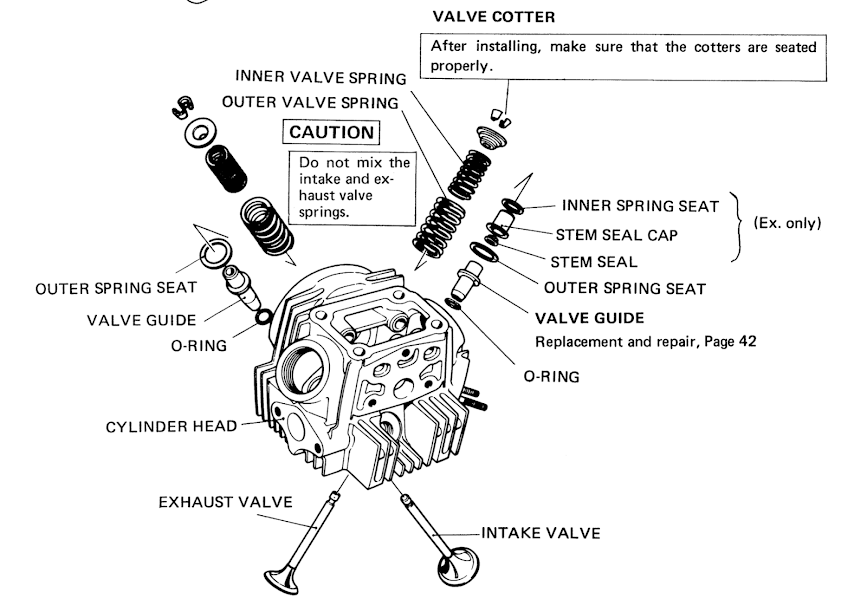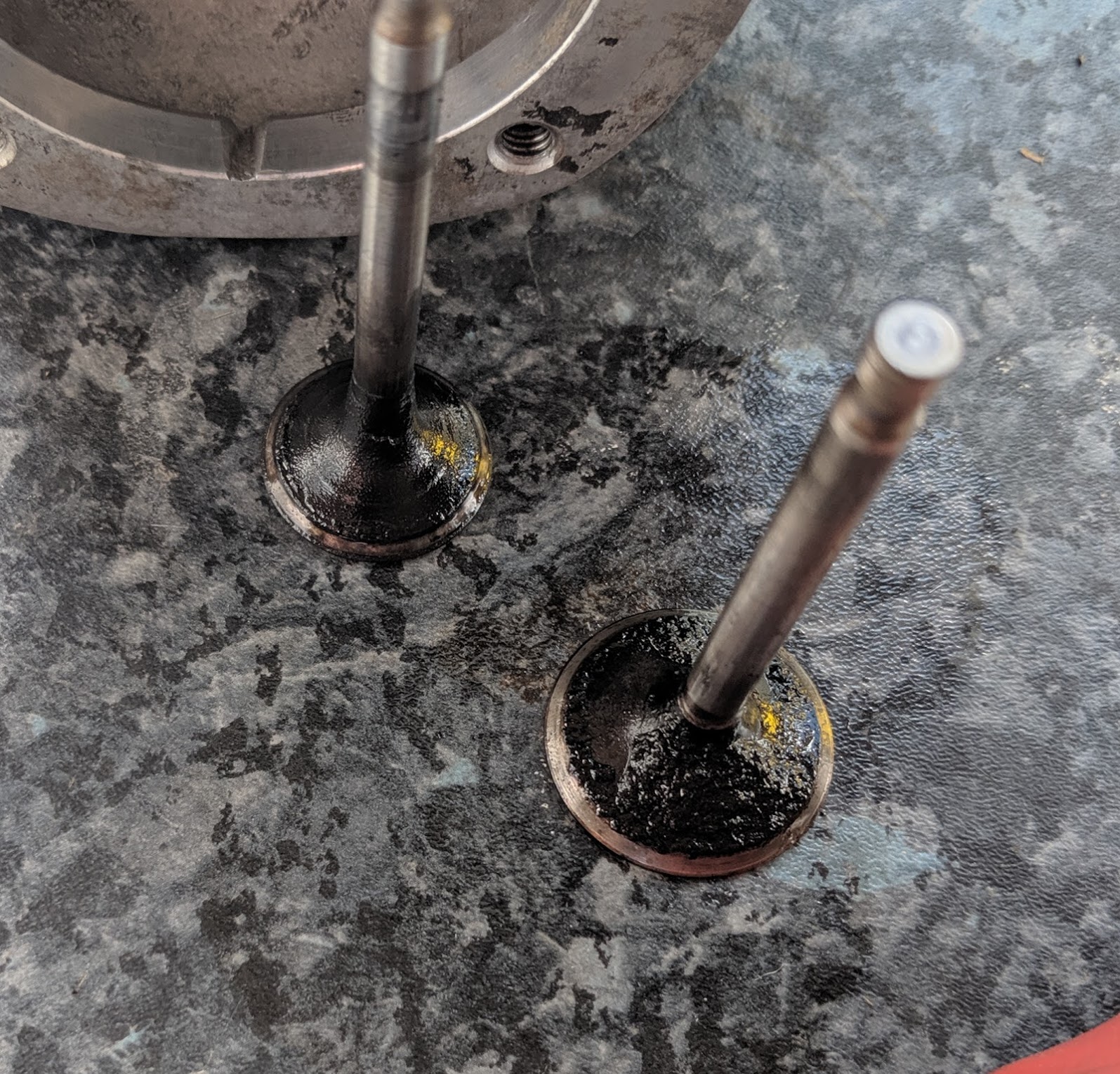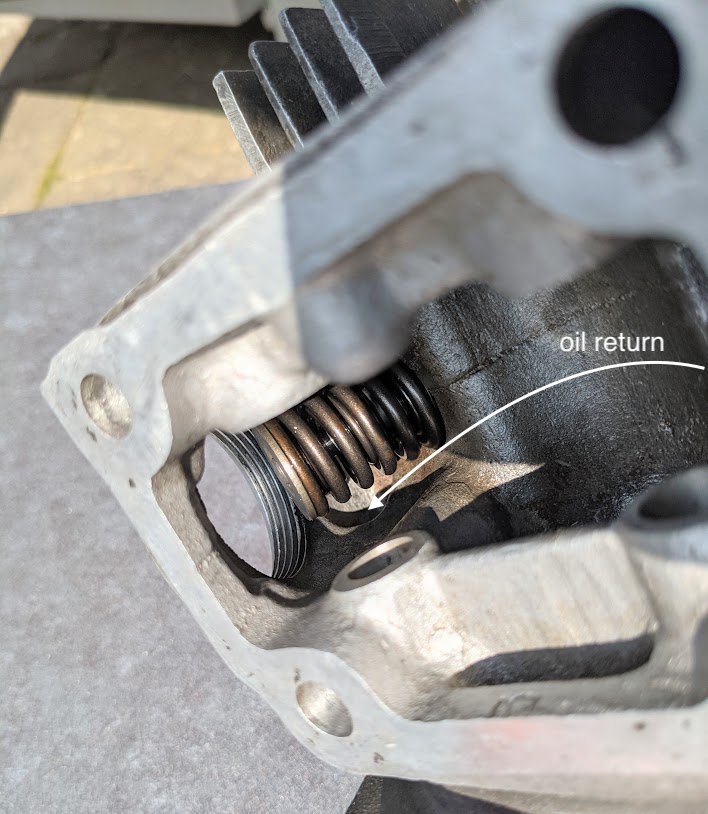The valves are held in place by metal guides installed in the cylinder head and on some C90s (including the c90 z2) there is a synthetic rubber valve seal on top of the exhaust valve guide, as is shown in this diagram from the 1978 CT90 service manual:

Honda tried a number of different valve seal arrangements over the years and, on later bikes, settled on using them on both the intake and exhaust side.
The purpose of the seals are to reduce the amount of oil that seeps past the guides into the combustion chamber. In addition to wasting oil, the oil burns in the cylinder causing a smokey exhaust and contributing to the build up of hard black carbon deposits on the piston head, combustion chamber and back of the valves:

Here is the exhaust valve seal used in the c90 z2: the rubber seal fits inside a “top hat” shaped cap that covers the top of the valve guide. A small washer fits over the top-hat and acts as the bearing for the inner valve spring:


I can’t find a definitive explanation as to why Honda chose initially to put a seal only on the exhaust side for older bikes. The opposite arrangement – where only the intake valve has a seal – is generally explained because when the intake valve is open it is subjected to a vacuum that tends to suck the oil past the guide, whereas the exhaust valve is under pressure.
A possible explanation for Honda’s decision is that the design of the oil delivery/return in the cylinder head results in oil puddling around the exhaust valve guide. The oil return channel is just below the exhaust valve when the cylinder head is mounted on the engine so perhaps Honda concluded an additional measure was needed to prevent the oil pooling over the guide from leaking into the cylinder.

It is interesting to note that many 1960s Hondas came without any valve seals, as was common on bikes of this era. Honda’s valve seals experiments coincided with the dates they started to compete with other makers on warranty periods: in the early 1960s it was unusual to get a car or motorcycle manufacture warranty at all, but over the next decade or so many makers introduced one, initially with a 3 months guarantee then 6 months and, eventually, offering 1 and 2 years. Honda were at the forefront of these improvements in quality and guarantees, having realised it was a good way to differentiate themselves from the makers of British and American bikes which were unreliable in comparison. Given that excessive oil consumption is closely associated with maintenance issues in many people’s minds this helps explains Honda’s ongoing tinkering with valve seal arrangements.
Anyhow, when you have the valves out for inspection and cleaning you may as well replace any valve seals at the same time. The valve guides can also wear in high mileage engines and, according to the manual, they can be replaced but the guides are made over sized and you need a special tool to grind them to the right profile.